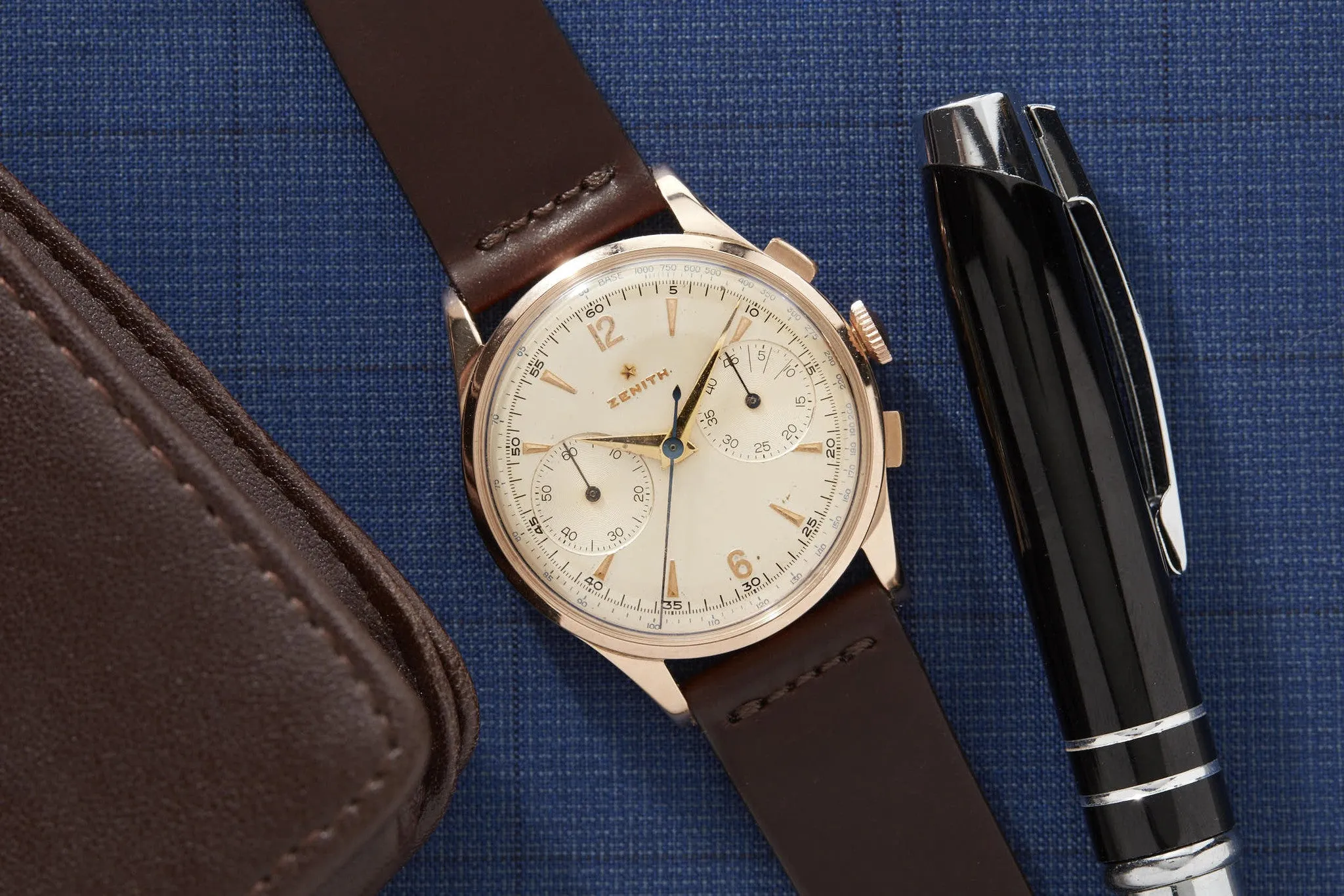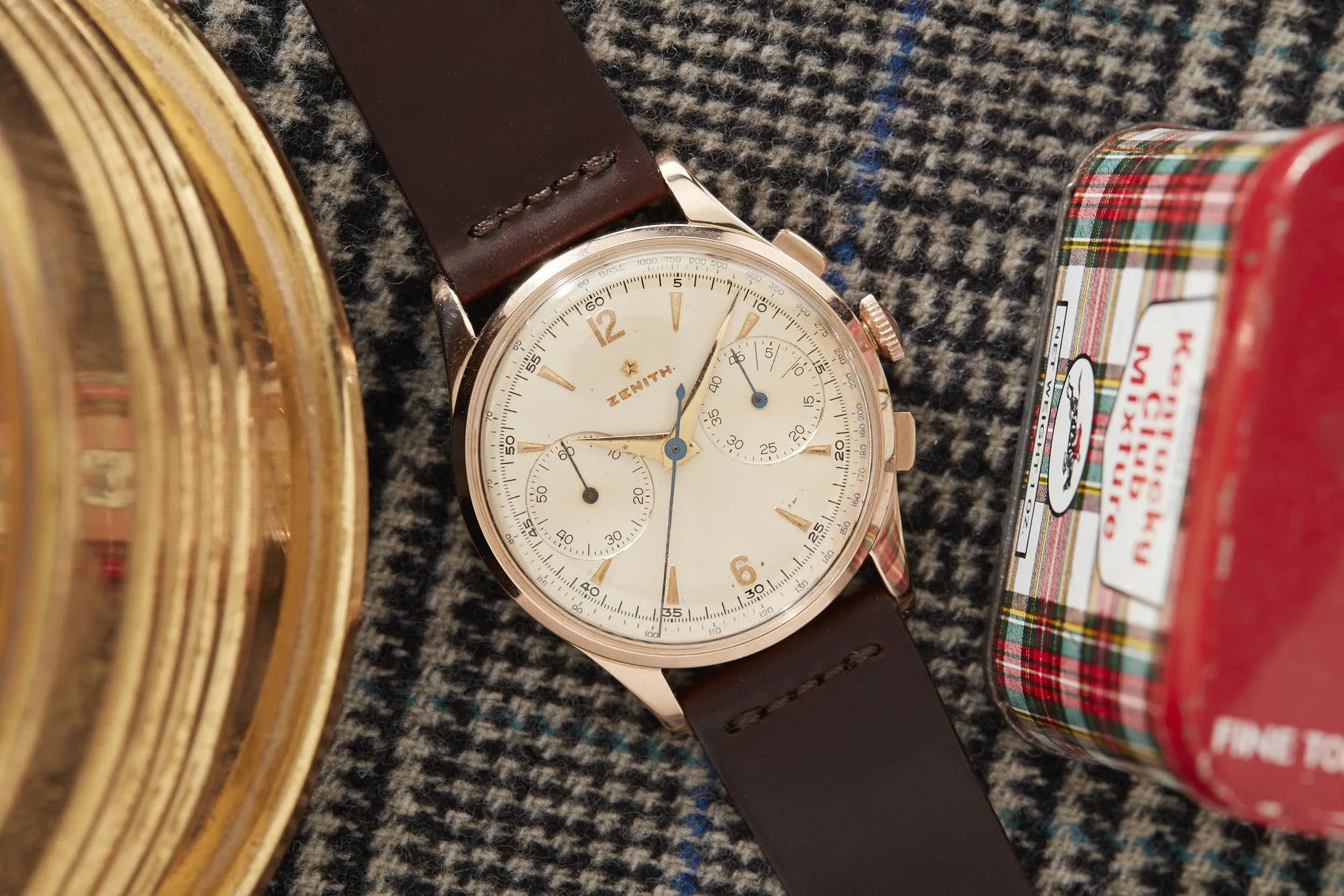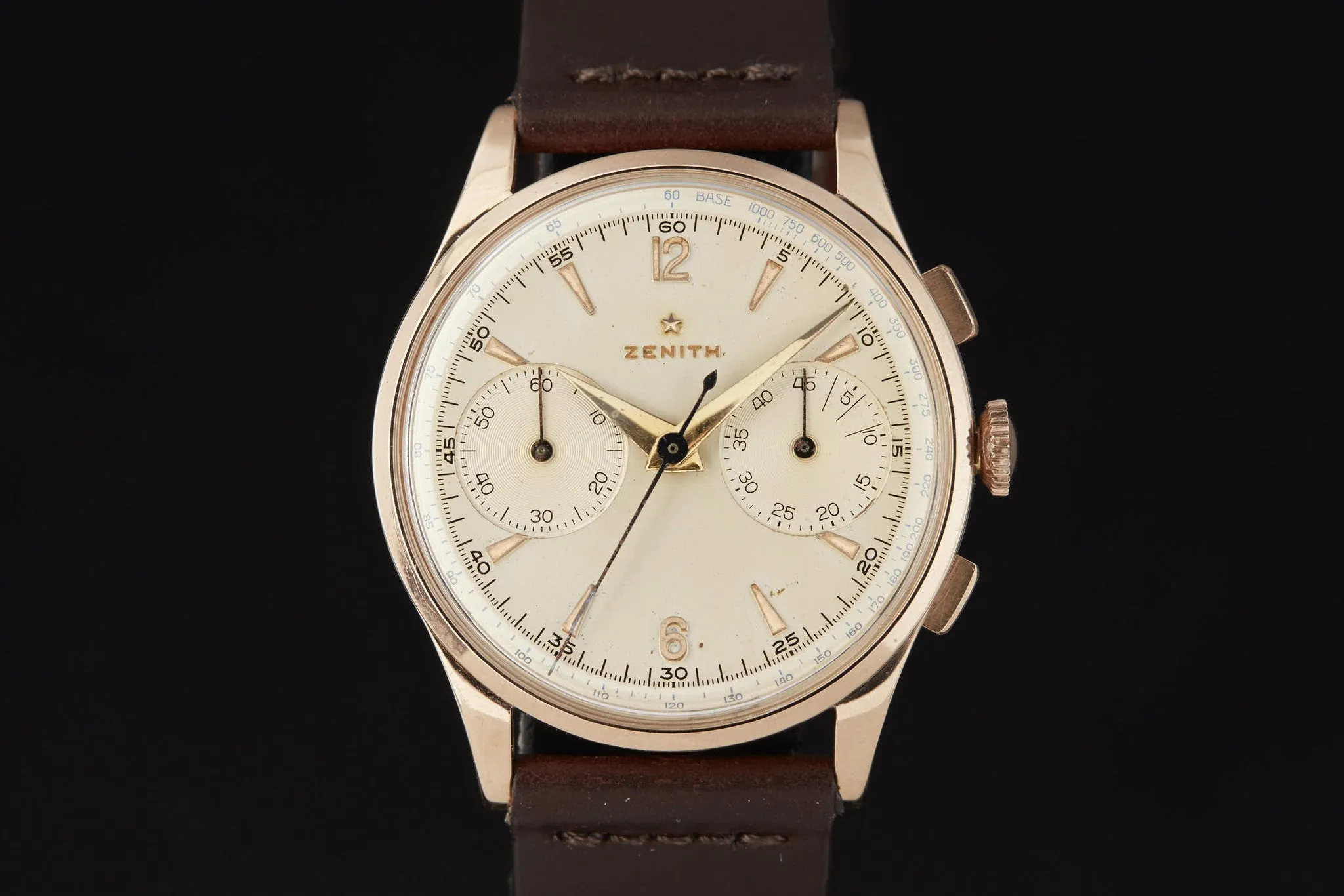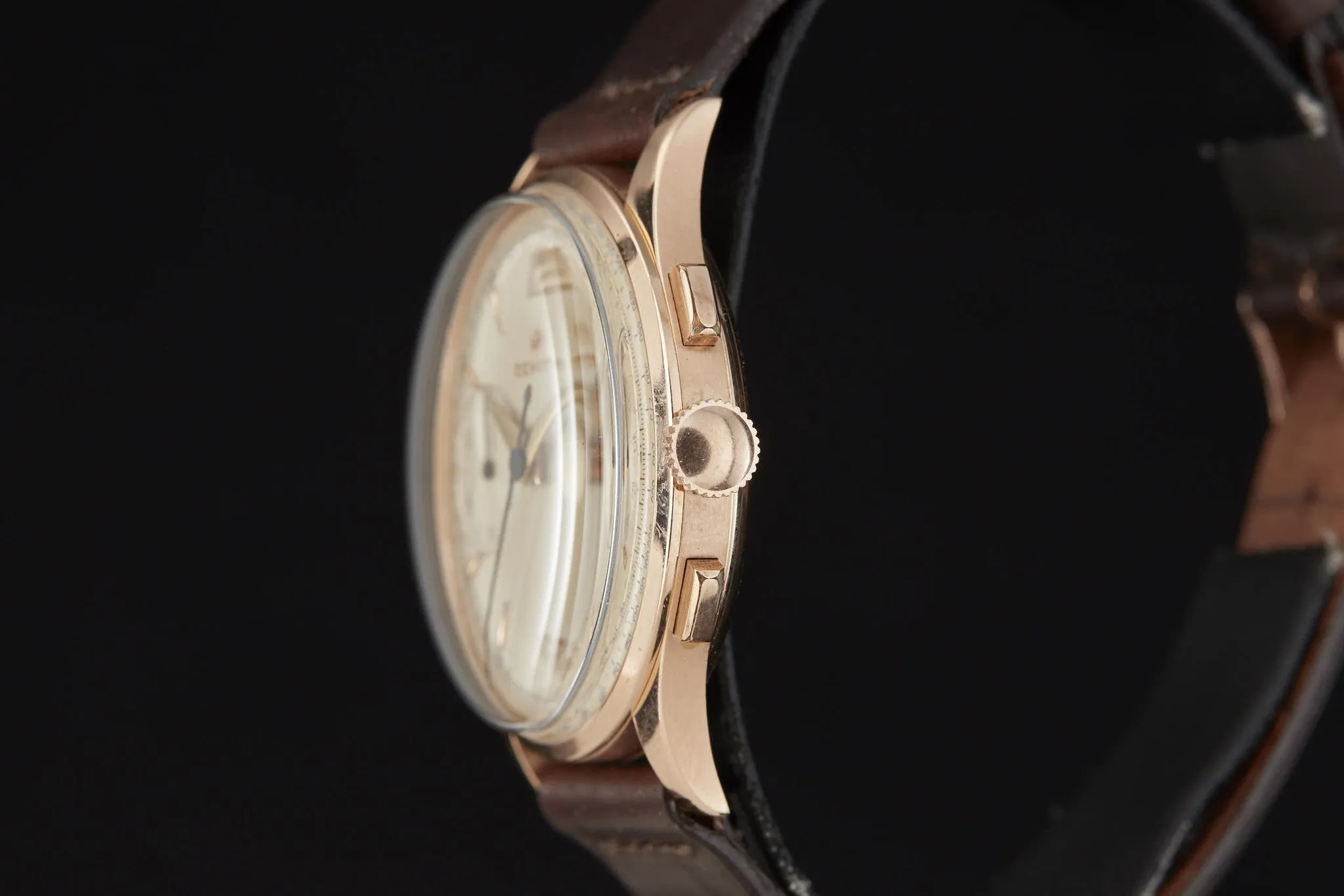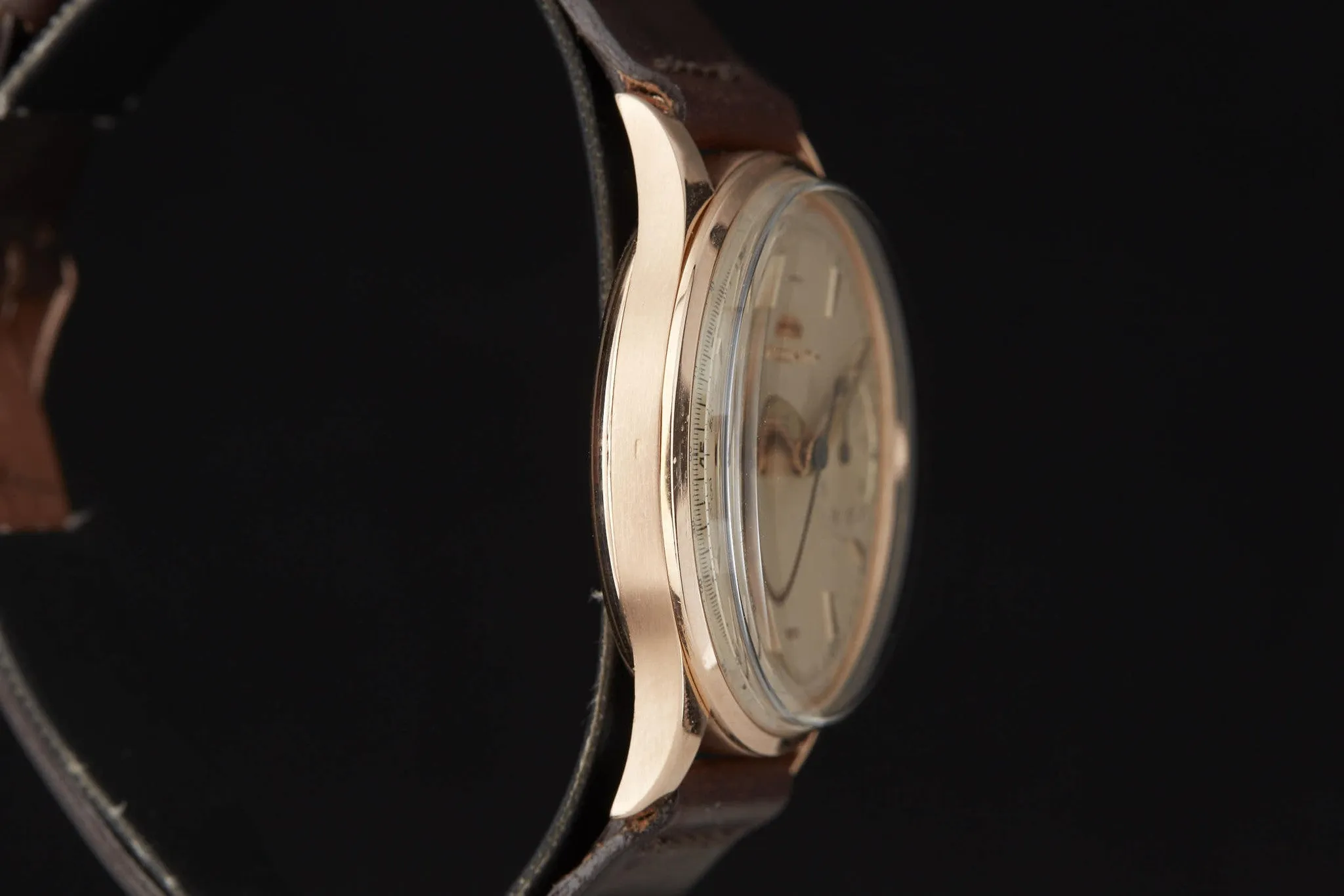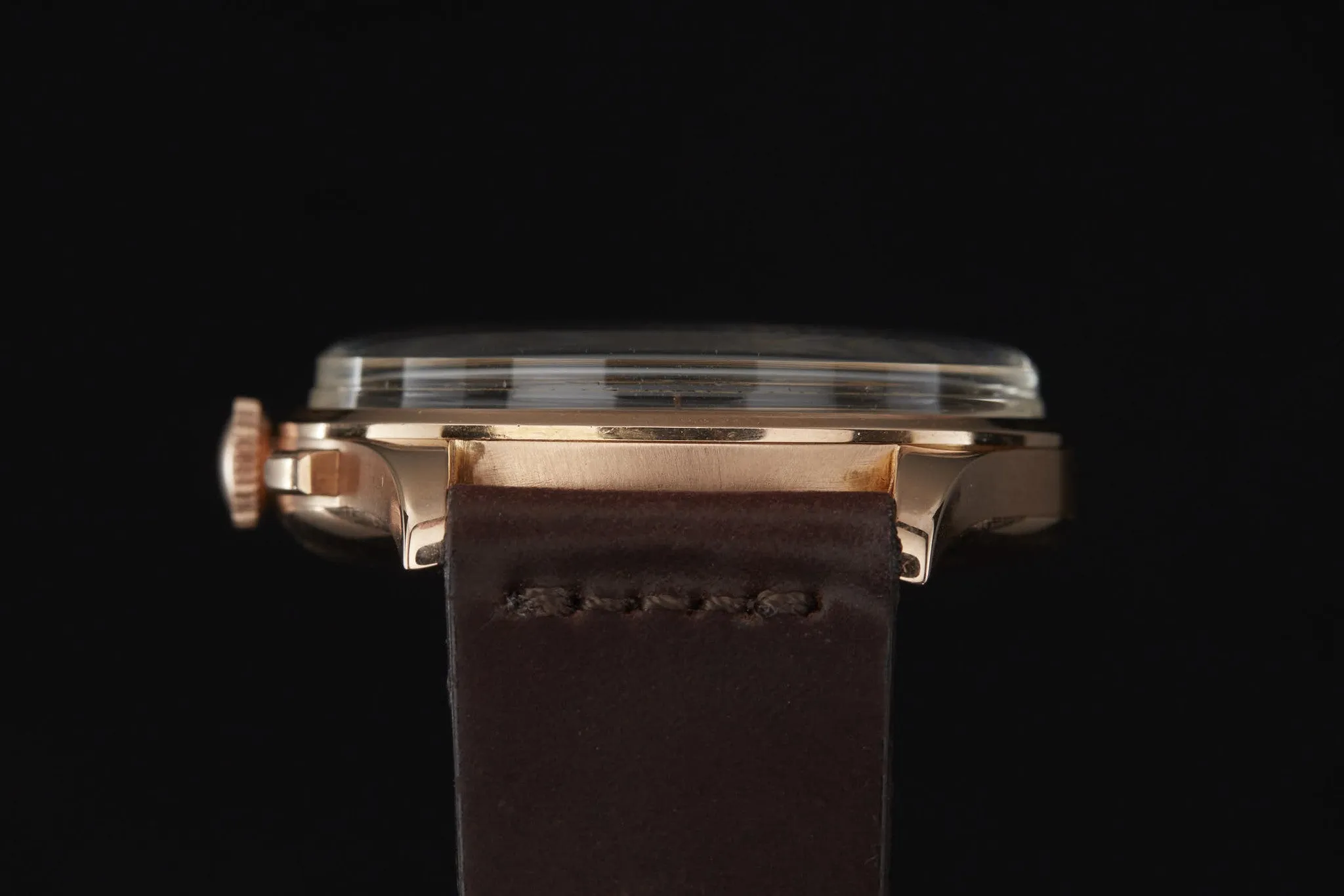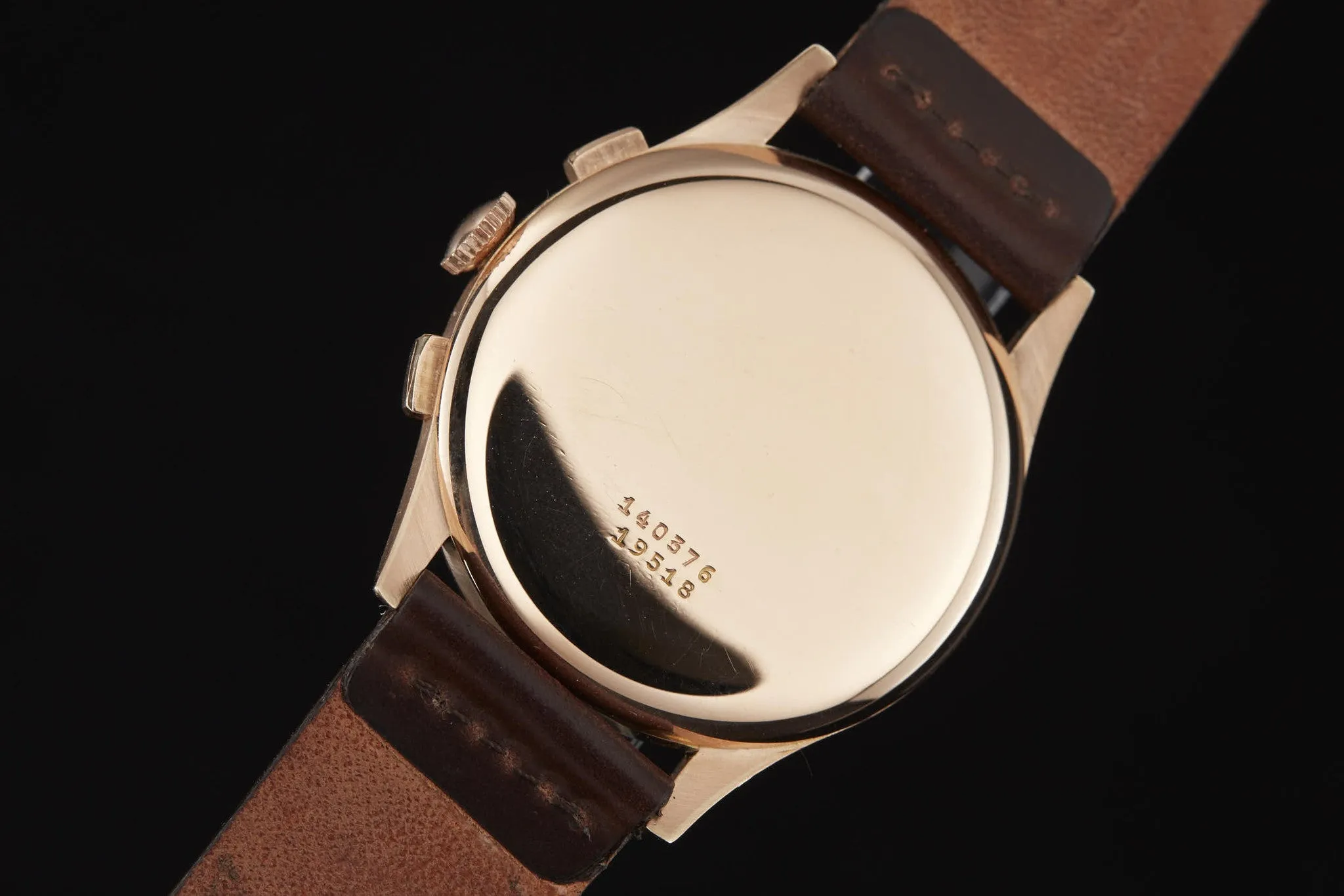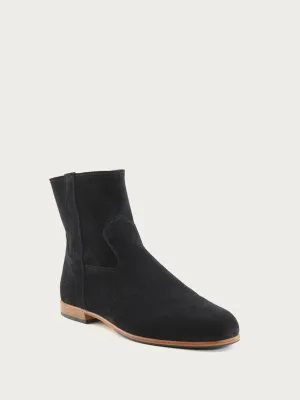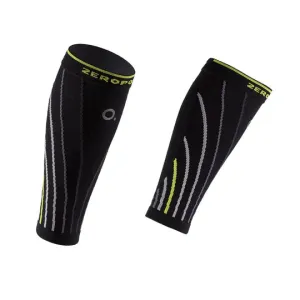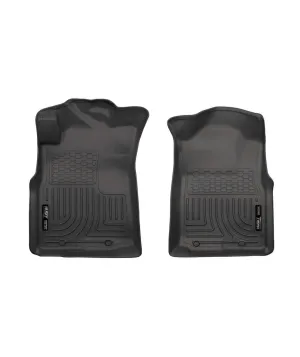A gold watch makes a statement.
Traditionally, gold dress watches are the mark of success, style and, sometimes, years of loyal service. By the mid-1970s gold sports watches--like the --began to draw favor, replacing the smaller, simpler dress pieces as the designation of taste, wealth and savoir faire.
Landing between two extremes, gold dress chronographs have become a sort of sensible middle ground offering wearers the warmth and class of precious metal as well as the relative sportiness of a chronograph.
In truth, the notion of gold chronographs in particular almost defies the intended purpose of most chronographs. Whether commanding a carbureted cruiser through the chicanes or piloting a prop-pulled P-38 Lightning, chronographs began as tool watches built to be durable and robust.
But while chronographs forged from precious metals are perhaps less practical than their steel counterparts, examples like this Zenith Reference 15198, with its oversize case and wide-open dial, is so eye-catching that it should give pause to even the most hardened pragmatists.
Zenith, it seems, has always excelled at producing chronographs. While their best-known (and deservedly so) chronographs are those containing the famed movement, the brand produced an array of elegant and dependable manually-wound chronographs. And the best-known of these were powered by movements made by Martel.
In the brand's early days, Zenith used Excelsior Park and Valjoux movements, sharing them with and (which Zenith would acquire in 1969). But throughout the 1960s, Zenith relied heavily on the èbauche manufacturer Martel, using their movements almost exclusively. While the most-desirable of these (like this ) were powered by the Caliber 146 (which Movado also used in the ), Zenith also used the Caliber 156.
The twin registers of the Caliber 156 gives the watch a wide-eyed look, perfectly offset by the Arabic numerals at 12 and 6 and the dart hour markers. While there's a 60-minute track in black and a telemeter track on the outer edge of the dial in pale blue, they're subtle, and don't take anything away from the dial's clean lines. On the whole, it's visually-appealing, a more dignified answer to the sporty chronographs that Zenith does so well.
But it's subtle details like the elongated hash marks in the 45-minute register at 3, 6, and 9 that distinguish this watch. In these days of Skype, keeping track of minutes in a long-distance call might be a thing of the past. But in the 1950s, many chronographs like this one featured longer hash marks at those intervals, because in those days, those times are when prices of long-distance phone calls would jump. Though that might not apply anymore, for anyone who might need to keep track of billable hours, this feature might prove handy.
This particular Reference 15198 is in beautiful condition, with a crisp case (so rare with precious metal) and an ivory dial that's gained a gorgeous patina over time. Additionally, it's been recently serviced by our friends at Central Watch, and comes with a service warranty. It combines the best of function and form, a perfect choice for a punctual and punctilious person with an appreciation for exquisite horology. And with other examples , there has never been a better moment to scoop up a classic dress chronograph.

 Cart(
Cart(